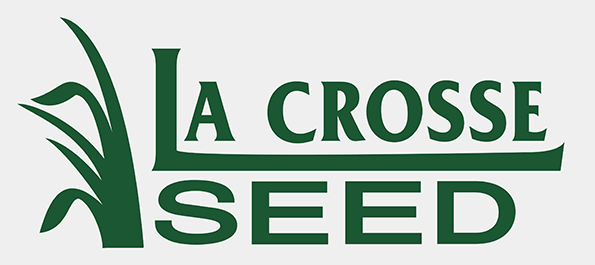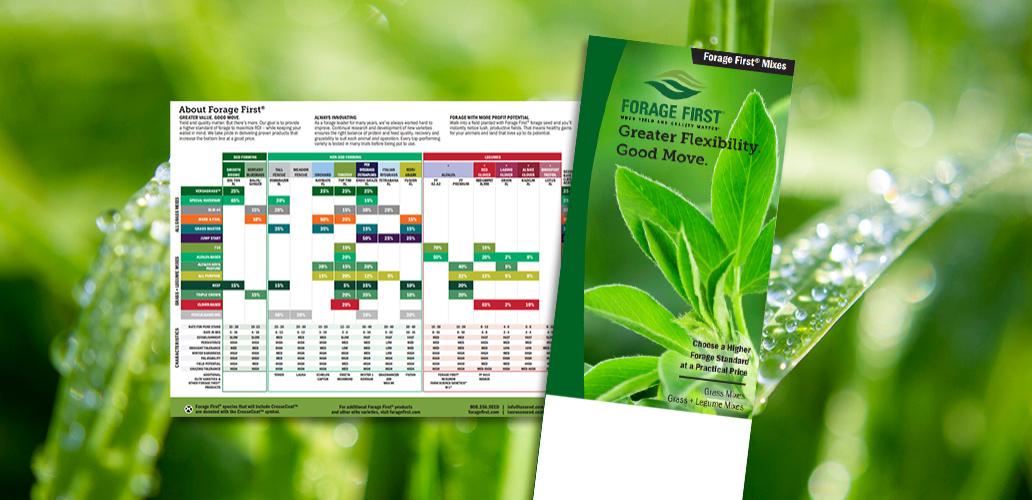Forage First Guide I Summer Select Guide
Greater Value. Good Move. Yield and quality matter. But there’s more. Our goal is to provide a higher standard for forage to maximize ROI– while keeping your wallet in mind. We take pride in delivering proven products that increase the bottom line at a good price.

CHARACTERISTICS:
Establishment: Medium
Persistence: High
Drought Tolerance: High
Winter Hardiness: Med High
Palatability: Med High
Yield Potential: High
Grazing Tolerance: High
SEEDING:
Seeding Rate:
Alone (lbs./acre): 25-30
Mixes (lbs./acre): 6-12
Seeds/lb.: 227,000
Depth (in.): 1/4-1/2
Planting Time:
Mar.-May; Aug.-Spet.
Emergence (days): 14
Life Cycle: Perennial
Adaptation:
Tall fescue is adapted to cool and humid climates and most soils with a pH of 5.5-7.0. Tall fescue will grow fairly well on soils low in fertility, but it is better adapted to fertile conditions. Tall fescue will produce top growth when soils are as cold as 40°F, and it continues growth into late fall in the south.
Establishment:
Tall fescue is easy to establish due to its rapid germination and good seedling vigor. It may be planted by any common method such as grass seeders, hydroseeding, and broadcasting. For forage or pastures, seeding rates are 15-20 lbs./acre if drilled and 20-25 lbs./acre if broadcast. The seeding depth is 1/2 in. Turf seeding rates are 7-8 lbs./1000 sq. ft. for new lawns, and 4-5 lbs./1000 sq. ft. for established lawns.
MANAGEMENT:
Rotational Grazing:
Begin (in.): 4-8
Stop (in.): 3-6
Avg. Days Rest: 15-30
Hay or Haylage Harvest:
Cut boot to early head for first cut, then every
4 – 6 weeks thereafter
While tall fescue is tolerant of abuse and low fertility, it does respond to fertilizer inputs. Follow the soil test recommendations for turf and forage uses. Endophyte-infected tall fescue will tolerate grazing abuse better than most cool season grasses. If the tall fescue is an endophyte-free variety, it should not be grazed closer than 3 in., and will not tolerate overgrazing. Tall fescue can be grown with white clover, red clover and alfalfa. First cutting for hay should be at the late boot stage with further cuttings as regrowth allows. Tall fescue is one of the best grasses for stockpiling in the fall. When used for turf, mowing height should be 2-3 in. Mow frequently enough so no more than 1/3 of the total leaf surface area is removed. Fertility requirements are low-medium. Disease control measures may be needed depending on conditions during the growing season.
Ratings
Scale 1-9, where 9 = best or most pronounced
Persistence
Drought Tolerance
Winter Hardiness
Palatability
Yield Potential
Grazing Tolerance
- Broadly adapted with improved tolerance to extreme conditions
- Late maturing variety suitable for intense grazing & hay environments
- Improved disease resistance (rust & other leaf diseases)
- Maturity helps maintain higher RFQ at harvest

.png)
.png)


.png)










